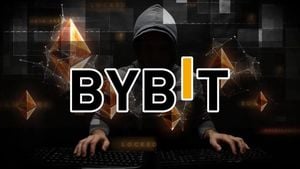The altcoin market is experiencing rapid changes, unveiled by the recent move by Nasdaq to file for the approval of the Canary HBAR ETF. This ETF aims to offer investors direct access to HBAR, the native cryptocurrency of Hedera. By allowing institutional investors to trade this altcoin on recognized platforms, Nasdaq’s decision serves as not only a new avenue for investment but also signals increasing regulatory acceptance of altcoins as eligible investment assets.
According to various reports, including statements by industry leaders, this ETF submission is indicative of changing dynamics within the cryptocurrency scene. Previously dominated by Bitcoin, the market is now seeing heightened institutional interest across different altcoins. Particularly, the SEC has shown more openness to digital investment products this year compared to last year, motivated by prior successes with Bitcoin ETF approvals.
Ki Young Ju, CEO of Cryptoquant, stirred discussions recently with his assertion on X (formerly Twitter) claiming, “Bitcoin dominance doesn’t define Alt Season anymore—trading volume does.” Traditionally, altcoin seasons—the periods during which altcoins outperform Bitcoin—have been recognized by declines in Bitcoin's market dominance as investors shift profits from Bitcoin to altcoins.
On February 21, data showed Bitcoin dominance at lower levels, rising slightly from 51.5% to 58% within the span of just two months, presenting mixed signals for altcoin enthusiasts. Investors are now pivoting their focus; instead of solely relying on profits from Bitcoin, many are seeking opportunities directly within altcoins such as Ethereum and Solana. What’s fascinating is the observation by Ju, who points out the substantial trading volumes of altcoins surpassing Bitcoin by 2.7 times.
“On any average day on crypto exchanges, if the Bitcoin trading volume is around $10 billion, total altcoin trading amounts to approximately $27 billion,” Ju detailed. Such figures suggest increasing traction for altcoins, highlighting their enhanced appeal among investors.
Crucially, the shift to stablecoins as preferred trading pairs is reshaping the crypto trading environment. Instead of making transactions involving Bitcoin, investors are increasingly using stablecoins such as Tether (USDT) and USD Coin (USDC) to directly purchase altcoins. This displays how market participants are modifying their trading strategies, demonstrating growing confidence not just within Bitcoin but particularly among various altcoins.
This trend raises meaningful questions about market confidence as stablecoin adoption facilitates transactions, which now significantly bolsters the altcoin ecosystem. Presently, the market value of stablecoins has reached around $232 billion, which provides substantial liquidity to the altcoin segment.
Yet, not all is green for altcoins. Ju termed the current phase as “highly selective altseason,” advising investors to undertake rigorous research before plunging funds. While enthusiasm builds around specific altcoins, the overall market remains fractured, with only select coins capturing significant liquidity. Observers have pointed to Solana’s infrastructure as complete with meme coins gaining traction, albeit challenges persist from rug pulls and insider schemes, effectively draining investor confidence.
Addendum to this ecosystem change is reflected through Hedera’s executive, Steven McClurg, emphasizing the importance of operational utility within the crypto space. "Hedera is a prime example of the type of enterprise technology positioned at the intersection of crypto and real-world utility," McClurg stated, advocating for the legitimate integration of such altcoins. This broader acceptance possibly reflects shifts within regulator sentiments, showcasing how companies like Canary Capital are orchestrated to introduce products aligning with regulatory standards.
Looking forward, if SEC approval for the HBAR ETF and similar initiatives continues to materialize, the ramifications for the altcoin market could be transformative. The prospect of mainstream investment vehicles for altcoins aims to drive liquidity, stability, and institutional engagement, leading to amplified adoption among retail investors.
These developments reinforce the narrative of the cryptocurrency market continuing toward maturation. Investors awaiting dividends from altcoin products will keep their eyes peeled for SEC actions, regulatory clarifications, and the upcoming transitions within the cryptocurrency framework. The enhancement of the entire altcoin market and its investor confidence continues to pivot toward finding viable projects with unique technologies and reliable use cases.
Conclusively, as the market adjusts to these complex changes, resting on Bitcoin’s laurels may not hold the same appeal it once did. Proactive investors can anticipate opportunities within altcoins depicting real-world applicability and comprehensive frameworks, positioning them favorably as the market evolves.



